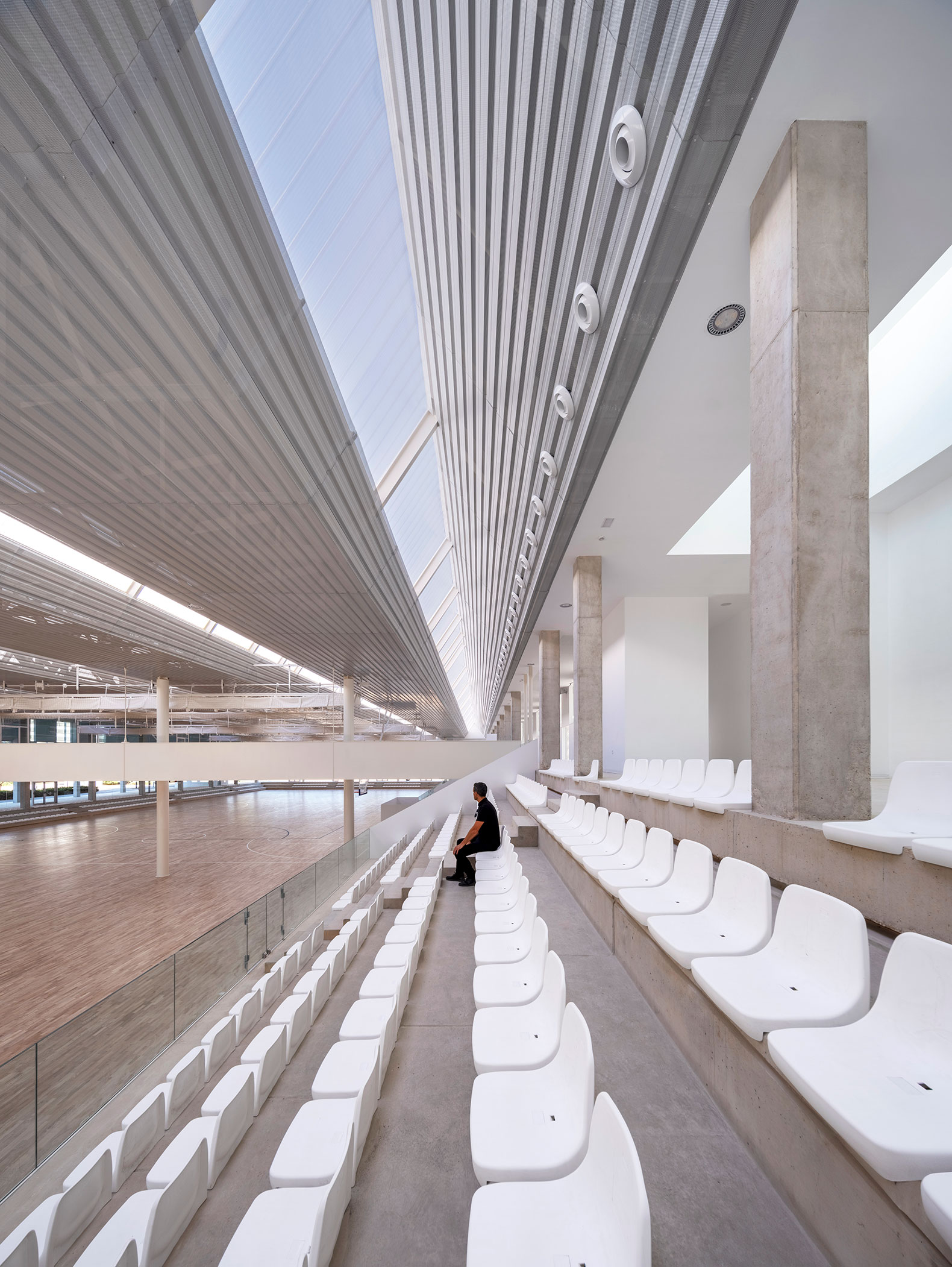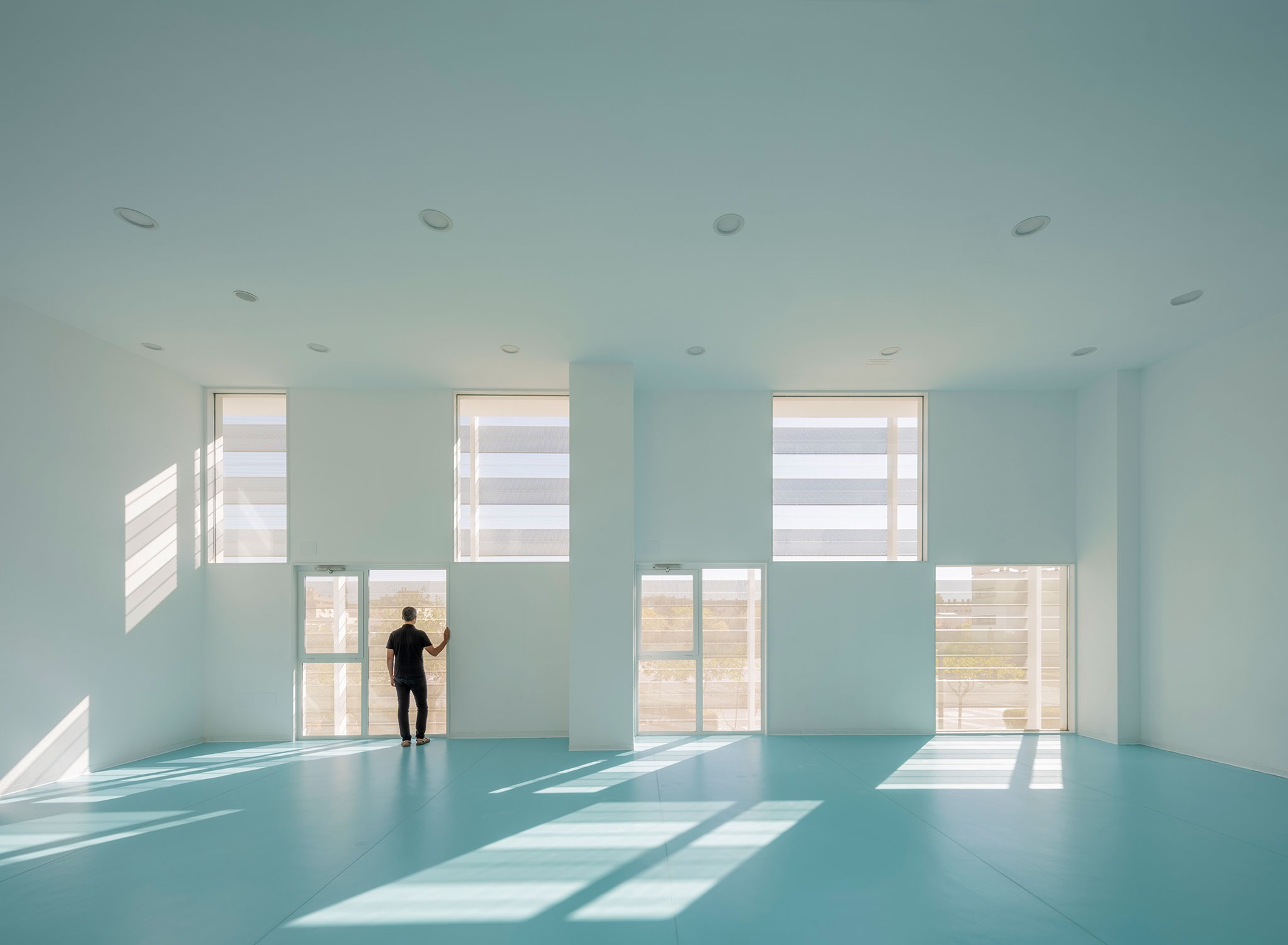
The Municipal Sports Pavilion, designed by NAOS Arquitectura and MCEA | Arquitectura, groups the different sports modalities into two main spaces, giving rise to a very extensive programme: a central space for team sports with a capacity equivalent to four indoor basketball courts and a grandstand, and spaces for gymnasiums and sports classes.
The project results in a building with very high energy efficiency that maximises natural lighting and allows cross ventilation throughout its entire volume due to the design of the checkerboard-shaped façades, which, in addition to creating a geometric game that gives rise to different interior perceptions, plays an important role in the thermal regulation of the project.

Municipal Sporst Pavilion by NAOS Arquitectura + MCEA | Arquitectura. Photograph by David Frutos.
Project description by NAOS Arquitectura and MCEA Arquitectura
The Municipal Sports Pavilion of San Vicente del Raspeig is configured as a large container of great versatility to host multiple sports modalities and large capacity events in general, in which the visual connection between interior and exterior becomes one of the directing threads of the project with the aim of making sports practice visible from the outside as a measure to promote sports.
To achieve the greatest degree of versatility of its spaces, the different sports modalities are grouped in two large spaces: on the one hand, the central space intended for team sports modalities and with the equivalent capacity of 4 indoor basketball courts and, on the other, room spaces for directed activities and gyms. Each of these interior spaces will be characterized by different nuances of light and color: the central space, overhead lighting through 5 skylights facing North and with a predominance of the warm tones of the wood of the flooring; the activity rooms, through illumination filtered through the two sheets of the facades and the different cold tones of its floors.

This spatial organization of uses at the same time offers great versatility in the management of the building, by allowing each of the main uses (pavilion, gym and cafeteria) to function independently.
The facades of the building are configured as a dynamic system in permanent change, in which the superposition of two different geometries, horizontal striping on the exterior leaf and checkerboard on the interior leaf, alternate with greater or lesser intensity depending on the nuances of the interior and exterior lighting. These changes in the composition of the façade are reinforced by the alternation between the intense white colour of the façade during the day and its decomposition into the different blue colours that arise from the reflection of the lighting on the interior floors of the building.

The building is configured as a very high energy efficiency system, maximizing the natural lighting of all spaces and configuring a motorized natural ventilation system that allows cross ventilation of the entire volume through its facades and the vents located in cover, allowing the nighttime dissipation of the heat accumulated during the day. These passive measures are complemented by the provision of an aerothermal system for the production of DHW and a photovoltaic installation for the production of electricity, thus configuring a building with almost zero energy consumption.










































































